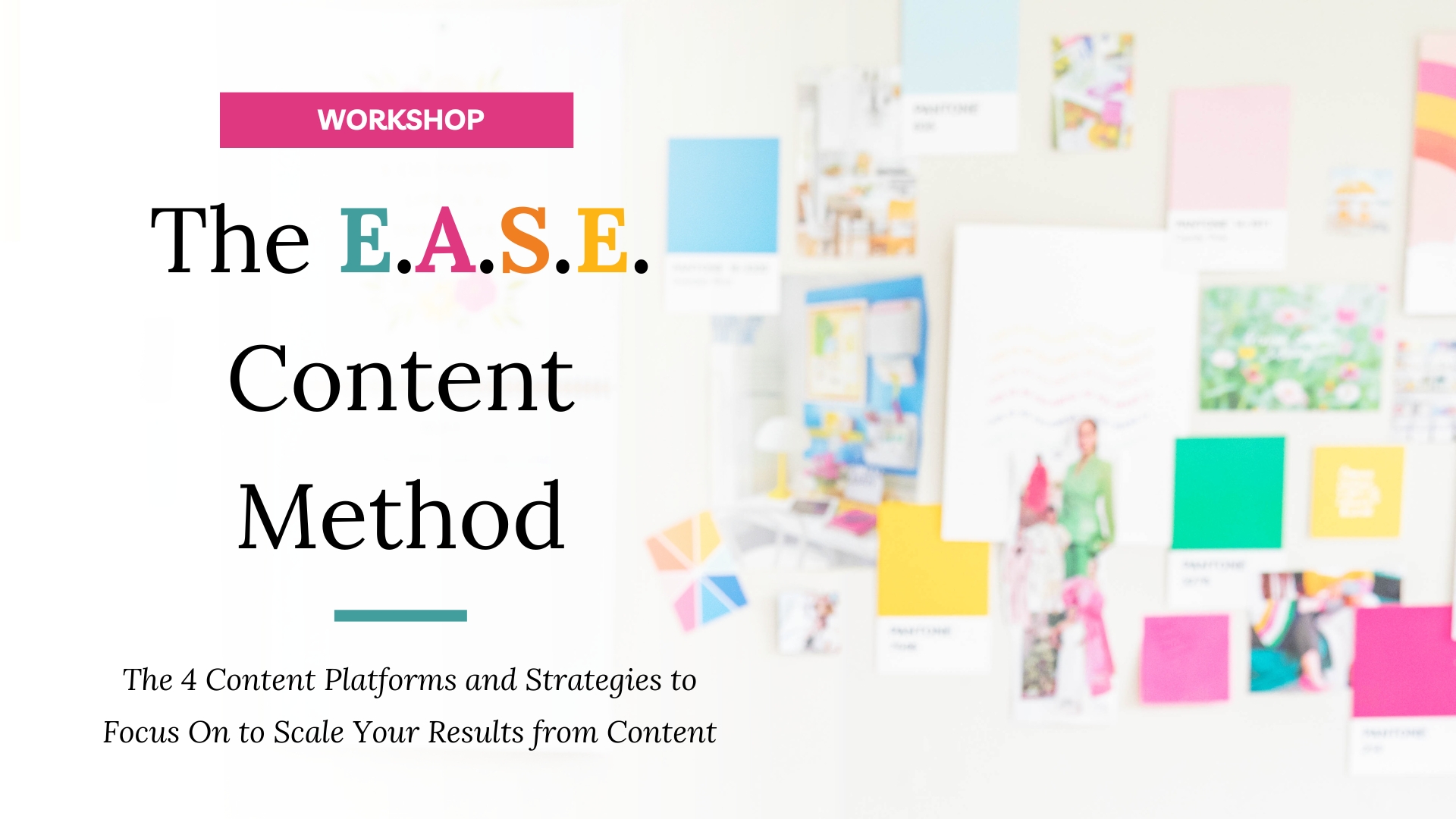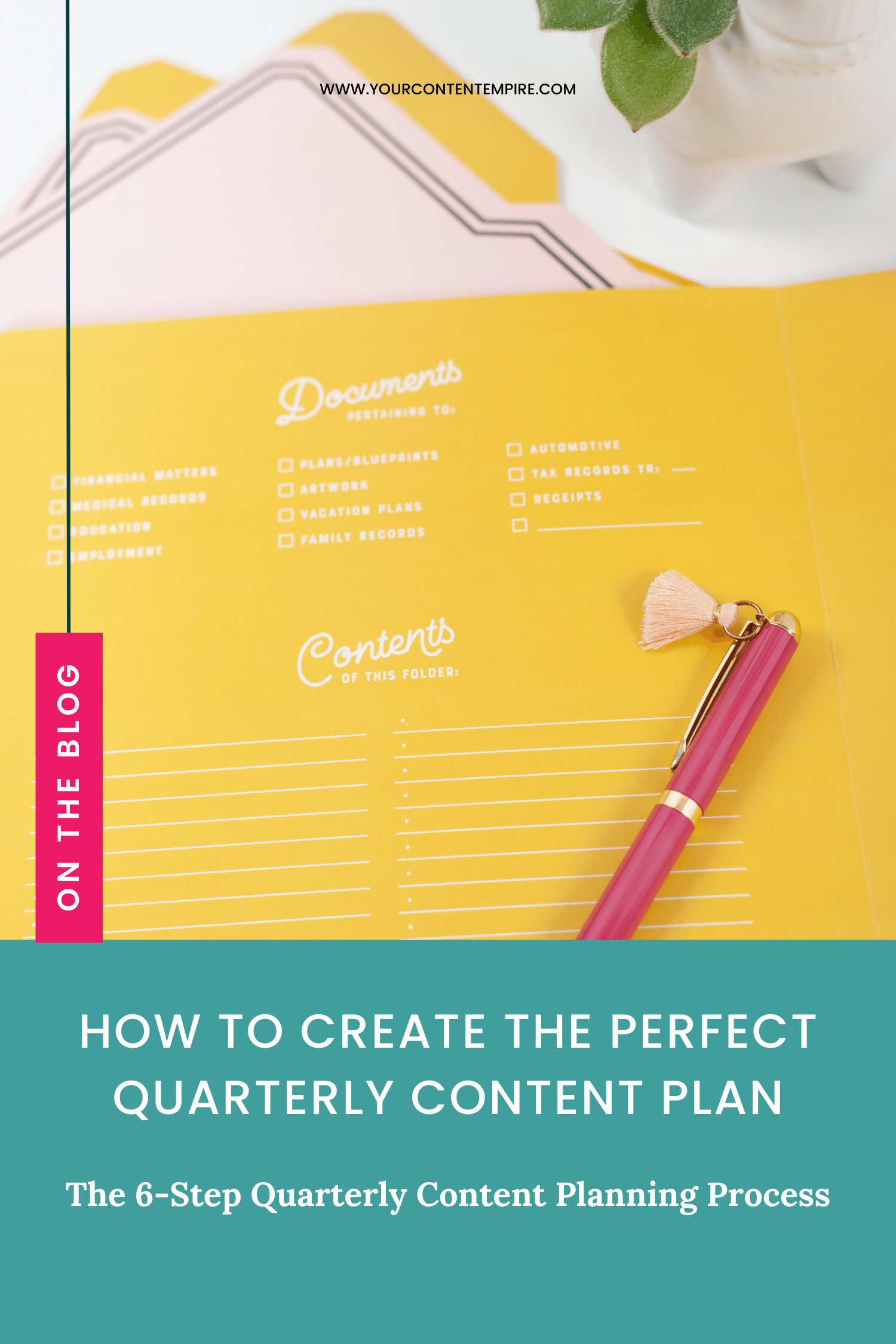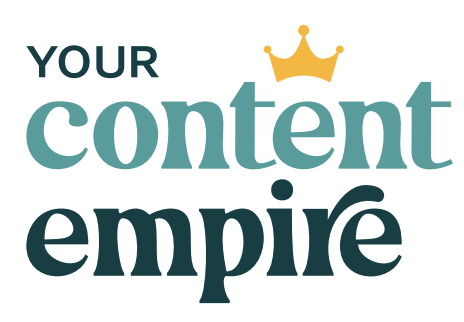Planning my content by quarters has been a game changer in my business. I’m able to keep up with (and even stay ahead of) my content calendar, be intentional about what I’m publishing in a way that supports my whole business (not just my blog), and I’m able to batch my content too (read my post on creating 20+ posts a month here).
What’s the benefit of planning on a quarterly basis over any other time period? I find it’s the sweet spot for actually hitting my goals. A month is really too short to start making traction, and a year just feels way too long to gain any sense of accomplishment.
Breaking down to every 12 weeks gives me enough time to start seeing results without feeling like too much time is passing by. But at the same time, 12 weeks is long enough to give you a bit of a buffer so that if something is happening in your personal life or your attention gets diverted, it won’t severely impact your ability to reach your goals.
But the best part? There is a magical week 13. I think of this as an off-week where I can step back and do whatever I want, whether that’s taking an actual vacation and going away or just kicking back and enjoying some personal time. Knowing I have a magical week 13 keeps me motivated throughout the year.
Sounds pretty great, right? Keep reading to learn the steps that I take when planning my next quarterly content plan.
Step 1: Measure the Previous Quarter
You might be thinking that Step 1 goes right into thinking about or planning for the quarter you’re going into, but if you start with that, you’ll be jumping too far ahead. Before we can create the best plan possible looking forward, we need some insight into where we stand now.
Here’s what I look at from the last quarter before jumping into planning the next one:
- engagement
- website traffic
- newsletter growth
- social media growth
- sales & where they came from
(Tip: in the Annual Content Planner, you’ll find a monthly measurement sheet that you can use to collect these numbers and track them over time.)You’ll find the measurements you need in places like the analytics of your Google account, shopping cart or payment processor, email provider, and social media platforms.
Measuring the return on investment of your content will help ensure that your efforts are moving you closer towards your desired outcomes—and it’ll help you set smarter goals for the next quarter. On to Step 2!
Step 2: Set Goals
If you approach this with the right mindset, Step 2 can be pretty fun and exciting. It’s a chance to look forward and decide what kind of objectives you want to shoot for this quarter.
I like to divide my goals into two categories:
- Results Goals: These goals are about targets, and the answer to this is always binary—you either hit it or you don’t. For example, Looking at your numbers from the past month, what targets do you want to hit in the coming quarter? Are there any sales goals or discovery call goals you want to hit?
- Project Goals: Project goals are usually about creating something. For example, when I was writing my book a couple of years ago, my goals for the quarter included finishing the first and second drafts of my book – these were my project goals. Are there any new project goals you’d like to complete this quarter?
I’m a big believer in making both results goals and project goals because it helps you set objectives in a much smarter, more effective way. And when you can set goals with a strategy, you’re much more likely to attain them.
Step 3: Brain Dump Your Upcoming Events
The next step is to do a brain dump of all the events you have coming up in the next three months. This is primarily for business events, but if you have any big personal events that may impact your capacity and availability, you can work these in too.
Doing this brain dump allows you to become more aware of what you’re working with in terms of capacity. This is the first step to working around those events.
Another thing this does is allow you to reverse-engineer content based on your schedule. If you’re coming up to a launch, you can plan the promotional runway upto it in advance.
Regarding personal events, it’s important to keep in mind that life happens, but you can plan around them and still keep your goals achievable.
Step 4: Create Your Week x Week Plan
This step is really important because it’s how you map out the smaller details in terms of what you need to accomplish each week to meet your quarterly goal. By having these smaller steps in place, you can measure your progress and stay on track as you go along.
Put all of the business events and projects you brain dumped on step three on your calendar, including any launches, promos, campaigns, events, and holidays. Then you can map out what needs to happen each week so you can arrive at the goals you set in week two.
Step 5: Topic Brainstorm
Once you have these cornerstones in place, it’s time to do a topic brainstorm. You’ll want to consider creating topics around upcoming launches, promos, and events happening in your business.
For example, if you’re launching something, you’ll want 3-4 weeks of content before opening your cart to do a pre-launch campaign. If you have a webinar, you’ll want to do a week of content to direct people to sign up for the webinar as the next step.
Here are a few questions to ask to start your topic brainstorm:
- What’s something I could teach my readers that will prepare them for my offer? (e.g., wedding stationery designers might do a series on how to create your guest list)
- What are some questions I get all the time from customers, readers and subscribers? Or that I see people asking on social media?
- What stories can I write about? What have I noticed lately in the industry? What are my customer success stories?
If you’re still having trouble coming up with topics, read my 3 Methods to Generate Tons of Blog Topics Your Audience Will Love.
Step 6: Build Your Calendar
Now let's bring it all together by completing your plan. Use the Monthly Content Planning Kit as a scratchpad, and then compile it all into your project management tool of choice, like Google or Asana.
If you’ve been around here before, you know that when it comes to planning for content success I am a big believer in batching. Batching can help you stay consistent with content even when you get busy.
But if your preference runs to bespoke content—creating one piece of content at a time—that’s totally fine, too. Whichever approach you prefer, just make sure your plan reflects it properly.
If you want a peek at how we execute content creation following the content plan, get a behind-the-scenes look at our epic quarterly batching workflow.
Want to Start Creating Your Quarterly (EASE) Content Strategy?
Get instant access to my E.A.S.E. Content Strategy Workshop where you'll learn the 4 content platforms and strategies to focus on to scale your results and sales from content. Plus you'll get my exclusive EASE Quarterly Content Planning Spreadsheet for FREE ↓














